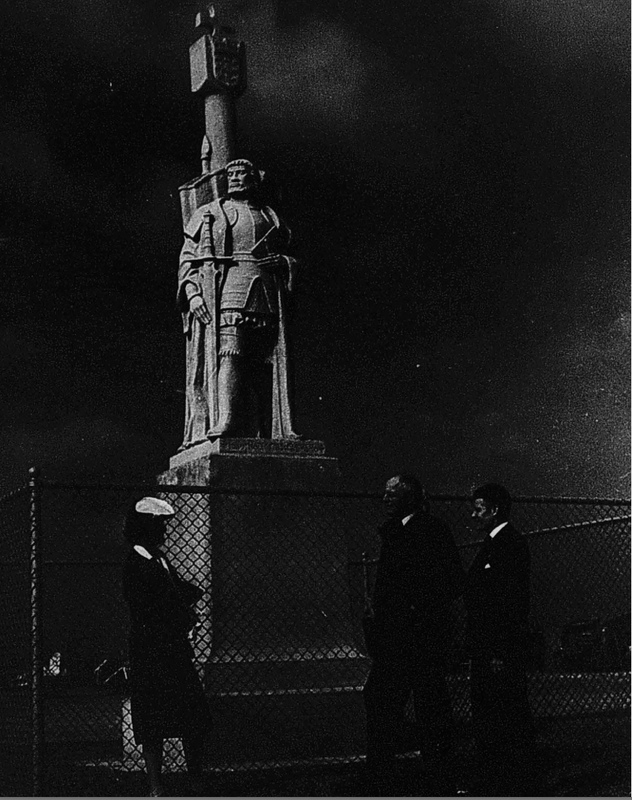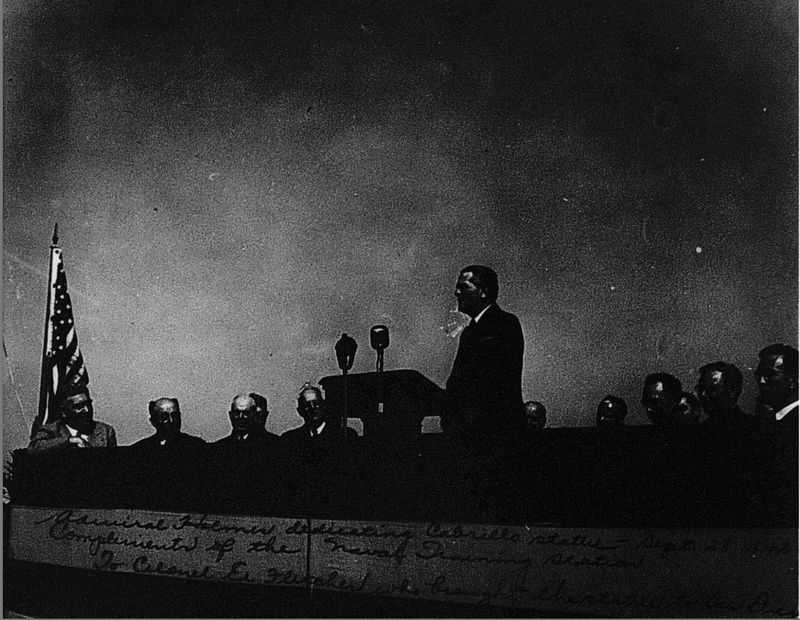1933-1942: Cabrillo Monument Comes to San Diego
1939: The Portuguese sculptor Alvaro de Bree was commissioned by the Portuguese government to create the Cabrillo Monument. Originally intended to appear in the 1939 Golden Gate Exposition in San Francisco, the Cabrillo Statue arrived too late to appear. After the exposition, the statue was going to be housed across the San Francisco Bay in Oakland due to the sizable Portuguese population. However, many San Diegans importantly including state senator Ed Fletcher, who was a main proponent of housing the statue at the site of Cabrillo's first landing in the continental United States. [1] Fletcher was aggressive in advocating for the Cabrillo Monument finding its permanent home in San Diego. Fletcher described the monument as "a prize worth fighting for" and with help from Lawrence Oliver, President of San Diego's Portuguese-American Club, were able to gain control of the Cabrillo Monument. [2] San Diego's acquisition of the monument stirred up one of the first great controversies in the monument's history as Oakland's mayor John F. Slavich and Assembly member George P. Miller claimed that the monument was kidnapped by Fletcher. Miller filed a protest with the state government in Sacramento, but these objections ultimately lost support and the monument was in San Diego to stay. [3]
1940: After arriving in San Diego, the statue found its first home on December 19, 1940 being placed on the grounds of the Navy Training Center facing Ballast Point. While housed here, the statue was surrounded by a fence and under guard by the members of the Navy for the time being to mitigate fears that the monument would be stolen back from them. [4]
1942: Two years later, the Cabrillo Monument was again moved, this time being placed near the Navy Sonar School. On September 28, 1942, a private ceremony was held commemorating the 400th anniversary of Cabrillo's landing in the Bay of San Diego. While being housed on the Naval Base, the monument was not accessible to the public, angering those who thought it should be publicly displayed on the land controlled by the National Parks Service. [5]
[1] Crawford, Richard . 2013. “The ‘Stolen’ Cabrillo Statue.” http://www.sandiegoyesterday.com/wp-content/uploads/2016/08/cabrillo_statue2.pdf.
[2]Ibid.
[3] Holland, F. Ross. 1980. “The Origin and Development of Cabrillo National Monument.” Npshistory.com. 1980. http://npshistory.com/publications/cabr/origin/index.htm.
[4]Martin, John. 2014. “A Tale of the Cabrillo Statues.” The Journal of San Diego History. https://sandiegohistory.org/sites/default/files/journal/v60-4/v60-4martin.pdf.
[5]Ibid.



